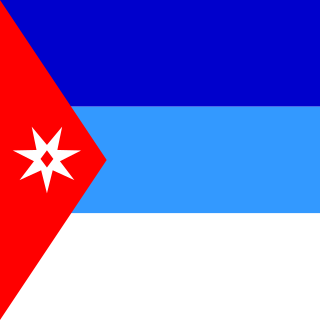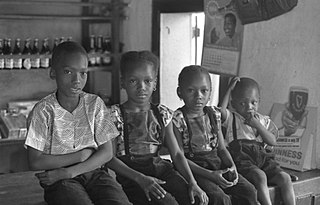Sierra Leone first became inhabited by indigenous African peoples at least 2,500 years ago. The Limba were the first tribe known to inhabit Sierra Leone. The dense tropical rainforest partially isolated the region from other West African cultures, and it became a refuge for peoples escaping violence and jihads. Sierra Leone was named by Portuguese explorer Pedro de Sintra, who mapped the region in 1462. The Freetown estuary provided a good natural harbour for ships to shelter and replenish drinking water, and gained more international attention as coastal and trans-Atlantic trade supplanted trans-Saharan trade.

The first written records of the region come from French traders (barbers) in the 9th and 10th centuries. In medieval times, the region was dominated by the Trans-Saharan trade and was ruled by the Mali Empire. In the 16th century, the region came to be ruled by the Songhai Empire. The first Europeans to visit the Gambia River were the Portuguese in the 15th century, in 1447, who attempted to settle on the river banks, but no settlement of significant size was established. Descendants of the Portuguese settlers remained until the 18th century. In the late 16th century, English merchants attempted to begin a trade with the Gambia, reporting that it was "a river of secret trade and riches concealed by the Portuguese."

The Mandinka or Malinke are a West African ethnic group primarily found in southern Mali, the Gambia and eastern Guinea. Numbering about 11 million, they are the largest subgroup of the Mandé peoples and one of the largest ethnic-linguistic groups in Africa. They speak the Manding languages in the Mande language family and a lingua franca in much of West Africa. The majority of Mandinka adhere to Islam. They are predominantly subsistence farmers and live in rural villages. Their largest urban center is Bamako, the capital of Mali.

Portuguese Guinea, called the Overseas Province of Guinea from 1951 until 1972 and then State of Guinea from 1972 until 1974, was a West African colony of Portugal from 1588 until 10 September 1974, when it gained independence as Guinea-Bissau.

The Asiento de Negros was a monopoly contract between the Spanish Crown and various merchants for the right to provide African slaves to colonies in the Spanish Americas. The Spanish Empire rarely engaged in the trans-Atlantic slave trade directly from Africa itself, choosing instead to contract out the importation to foreign merchants from nations more prominent in that part of the world; typically Portuguese and Genoese, but later the Dutch, French, and British. The Asiento did not concern French or British Caribbean but Spanish America.

The Royal African Company (RAC) was an English trading company established in 1660 by the House of Stuart and City of London merchants to trade along the West African coast. It was overseen by the Duke of York, the brother of Charles II of England; the RAC was founded after Charles II ascended to the English throne in the 1660 Stuart Restoration, and he granted it a monopoly on all English trade with Africa. While the company's original purpose was to trade for gold in the Gambia River, as Prince Rupert of the Rhine had identified gold deposits in the region during the Interregnum, the RAC quickly began trading in slaves, which became its largest commodity.
The lançados were settlers and adventurers of Portuguese origin in Senegambia, Cabo Verde, Guinea, Sierra Leone, and other areas on the coast of West Africa. Many were Jews—often New Christians—escaping persecution from the Portuguese Inquisition. Lançados often took African wives from local ruling families, securing protection and advantageous trading ties. They established clandestine trading networks in weaponry, spices, and slaves. This black market angered the Portuguese Crown by disrupting its ability to collect taxes.

Bunce Island is an island in the Sierra Leone River. It is situated in Freetown Harbour, the estuary of the Rokel River and Port Loko Creek, about 20 miles upriver from Sierra Leone's capital city Freetown. The island measures about 1,650 feet by 350 feet and houses a castle that was built by the Royal Africa Company in c.1670. Tens of thousands of Africans were shipped from here to the North American colonies of South Carolina and Georgia to be forced into slavery, and are the ancestors of many African Americans of the United States.

Sherbro Island is in the Atlantic Ocean, and is included within Bonthe District, Southern Province, Sierra Leone. The island is separated from the African mainland by the Sherbro River in the north and Sherbro Strait in the east. It is 32 miles (51 km) long and up to 15 miles (24 km) wide, covering an area of approximately 230 square miles (600 km2). The western extremity is Cape St. Ann. Bonthe, on the eastern end, is the chief port and commercial centre.

The Wassoulou empire, sometimes referred to as the Mandinka Empire, was a short lived West African state that existed from roughly 1878 until 1898, although dates vary from source to source. It spanned from what is now southwestern Mali and upper Guinea, with its capital in Bissandugu; it expanded further south and east into northern Ghana and Ivory Coast before its downfall.
Fernandinos are creoles, multi-ethnic or multi-racial populations who developed in Equatorial Guinea. Their name is derived from the island of Fernando Pó, where many worked. This island was named for the Portuguese explorer Fernão do Pó, credited with discovering the region.

The Dutch Gold Coast or Dutch Guinea, officially Dutch possessions on the Coast of Guinea was a portion of contemporary Ghana that was gradually colonized by the Dutch, beginning in 1612. The Dutch began trading in the area around 1598, joining the Portuguese which had a trading post there since the late 1400s. Eventually, the Dutch Gold Coast became the most important Dutch colony in West Africa after Fort Elmina was captured from the Portuguese in 1637, but fell into disarray after the abolition of the slave trade in the early 19th century. On 6 April 1872, the Dutch Gold Coast was, in accordance with the Anglo-Dutch Treaties of 1870–71, ceded to the United Kingdom.
The Sierra Leone Company was the corporate body involved in founding the second British colony in Africa on 11 March 1792 through the resettlement of Black Loyalists who had initially been settled in Nova Scotia after the American Revolutionary War. The company came about because of the work of the ardent abolitionists Granville Sharp, Thomas Clarkson, Henry Thornton, and Thomas's brother John Clarkson, who is considered one of the founding fathers of Sierra Leone. The company was the successor to the St. George Bay Company, a corporate body established in 1790 that re-established Granville Town in 1791 for the 60 remaining Old Settlers.

The Temne, also called Atemne, Témené, Temné, Téminè, Temeni, Thaimne, Themne, Thimni, Timené, Timné, Timmani, or Timni, are a West African ethnic group, They are predominantly found in the Northern Province of Sierra Leone. Some Temne are also found in Guinea. The Temne constitute the largest ethnic group in Sierra Leone, at 35.5% of the total population, which is slightly bigger than the Mende people at 31.2%. They speak Temne, a Mel branch of the Niger–Congo languages.
Thomas Corker was known as an English agent for the Royal African Company on York Island. He married a Sherbro woman and had two sons with her before his early death.
The African Company of Merchants or Company of Merchants Trading to Africa was a British chartered company operating from 1752 to 1821 in the Gold Coast area of modern Ghana, engaged in the Atlantic slave trade.

Sir Nicholas Crispe, 1st Baronet was an English Royalist and a wealthy merchant who pioneered the West African slave trade in the 1630s; a customs farmer ; Member of Parliament for Winchelsea Nov. 1640-1 ; member of the Council of Trade and for Foreign Plantations ; and Gentleman of the Privy Chamber from 1664. He was knighted in 1640 or 1641 and was made a baronet in 1665. He died in February 1666 (O.S.) aged 67.

The Komenda Wars were a series of wars from 1694 until 1700 largely between the Dutch West India Company and the English Royal African Company in the Eguafo Kingdom in the present day state of Ghana, over trade rights. The Dutch were trying to keep the English out of the region to maintain a trade monopoly, while the English were attempting to re-establish a fort in the city of Komenda. The fighting included forces of the Dutch West India Company, the Royal African Company, the Eguafo Kingdom, a prince of the kingdom attempting to rise to the throne, the forces of a powerful merchant named John Cabess, other Akan tribes and kingdoms like Twifo and Denkyira. There were four separate periods of warfare, including a civil war in the Eguafo Kingdom, and the wars ended with the English placing Takyi Kuma into power in Eguafo. Because of the rapidly shifting alliances between European and African powers, historian John Thornton has found that "there is no finer example of [the] complicated combination of European rivalry merging with African rivalry than the Komenda Wars."
John Cabess was a prominent African trader in the port city of Komenda, part of the Eguafo Kingdom, in modern-day Ghana. He was a major British ally and was a supplier to the British Royal African Company. As a trader, he became a strong economic and political force in the coastal region in the early 1700s, playing an active role in the Komenda Wars, the rise of the Ashanti Empire, the expansion of British involvement in West Africa, and the beginnings of large-scale Atlantic slave trade. Because of his combined economic and political power, historian Kwame Daaku named Cabess one of the "merchant princes" of the Gold Coast in the 1700s. He died in 1722, but his heirs continued to exert economic power in the port for the remainder of the 18th century.

Panyarring was the practice of seizing and holding persons until the repayment of debt or resolution of a dispute which became a common activity along the Atlantic coast of Africa in the 18th and 19th centuries. The practice developed from pawnship, a common practice in West Africa where members of a family borrowing money would be pledged as collateral to the family providing credit until the repayment of the debt. Panyarring though is different from this practice as it involves the forced seizure of persons when a debt was not repaid.












